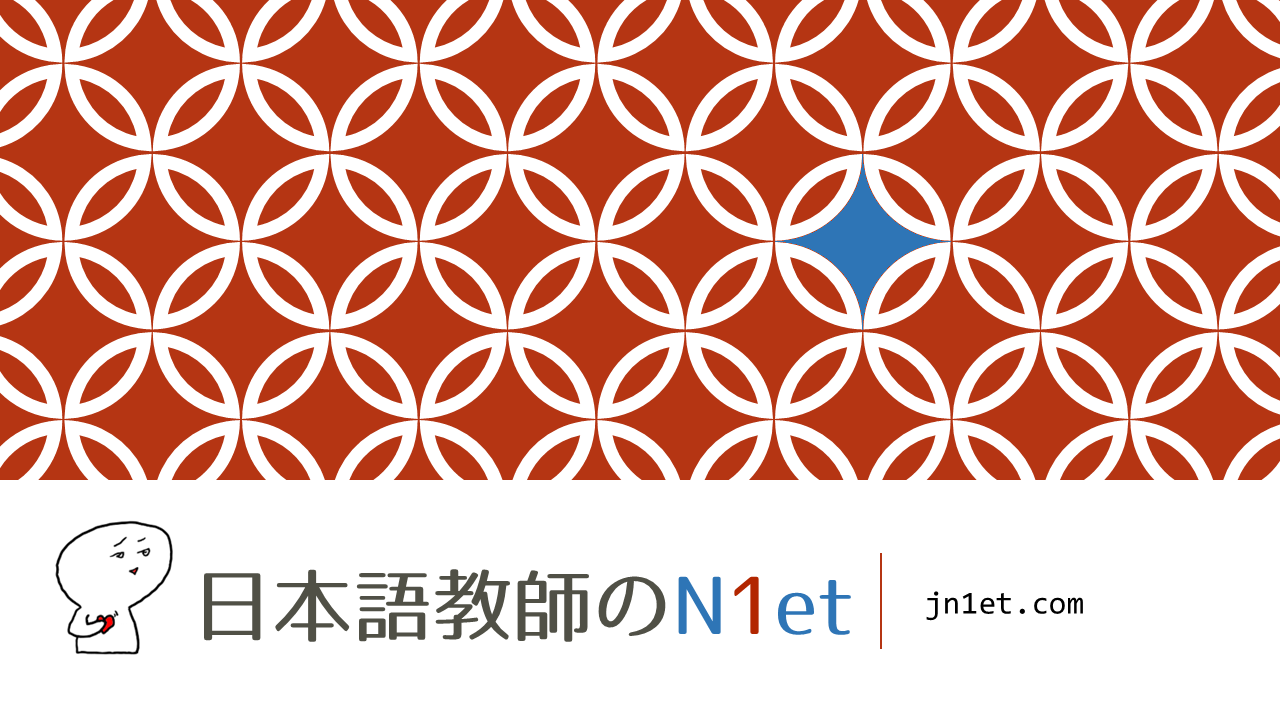「ごとに」用法
接続
Vジ・N+ごとに/ごとの
V:する+ごとに/ごとの
A:なし
Na:なし
N:1日+ごとに/ごとの
意味・使い方
1.X〈期間〉に1回後件する、と言いたい時に用いる。
例:2日ごとに食べている。(=月曜:食べる、火曜:食べない、水曜:食べる、木曜:食べない)
図:●〇●〇●…(黒丸は食べる、白丸は食べない)
2.「1日ごとに」は簡単に言えば「毎日」という意味である。では、どんな時に、なぜ「1日ごとに」を使うのか。それは「必ず毎日」と強調したいときに使うのだ。
「毎日する」と言っても、1日ぐらいしない日もあるだろう。しかし、普通人はそのたまにしかない1日をカウントなどせず、「毎日」と言う。1日の漏れもなくしていると言うなら「1日ごとにする」と言えばいい。
実際はあまり使われない言い方だが、そういう言い方もあるということを紹介しておく。ちなみに、英語ではevery single dayという表現があるが、これも同じことである。
3.漢字で書くと「毎に」となる。だから「1日毎に」が「毎日」となる。
例文
1つ食べ切るごとに1000円の商品券を進呈いたします。
A、B、C、D各グループごとに1人、代表を選んでください。
各部署ごとに最新式のパソコンが支給され、全社員が喜んだ。
戦国時代、兜は武将ごとに工夫された装飾品がついていた。
懸賞金が1RTごとに100円増えます。
そのアイドル達は当時、グループごとに衣装を揃えていたようだ。
肌タイプごとにおすすめのファンデーションをまとめてみました。
この木製テーブルは桐を使用しており、一つごとに違った木目がついている世界に一つだけのものです。
歳を重ねるごとに肌の張りがなくなってきた。
ドリンク1杯ご購入ごとにメンバーの豪華ブロマイドをランダムでプレゼントいたします!
拭っても拭っても、砂漠では数歩歩くごとに砂が顔につく。
オリンピックは4年ごとに開催される。
会社ごとに工夫されたパッケージデザインとなっている。
命日より七日ごとの供養を7回繰り返して個人が仏になるのを支援する四十九日という仏教の習わしがある。
フォンごとのイメージは多少違う。
先生ごとの評価が異なる記述の添削基準は決めるのが難しい。
こちらは日ごとの数量限定となりますので、早々に無くなってしまったらすみません。
「おきに」用法
接続
N+おきに/おきの
V:なし
A:なし
Na:なし
N:1日+おきに/おきの
意味・使い方
1.X〈期間〉をあけて後件する、と言いたい時に用いる。
例:一日おきに食べている。(=月曜:食べる、火曜:食べない、水曜:食べる、木曜:食べない)
図:●〇●〇●…(黒丸は食べる、白丸は食べない)
2.「Xおきに」はXの部分が1なら1つ空け、3なら3空ける。
3.漢字で書くと「置きに」となる(漢字ではあまり使われない)。だから「1日置きに」は「1日置いて次の日」となる。
例文
イベント前日まで数時間おきに「大丈夫?」と心配して電話してくれていた。
この大学は何十年かおきに大規模なお祭りをやっている。
肉は好きだが、あまり食べ過ぎると体に悪いので、一日おきに食べている。
昨日の検査で肝臓の数値が上がっていたからステロイド剤を1日おきに量を変えてあげることになりました。
1ヶ月おきにサイトを更新しています。
この商品は2分おきに売れているらしい、大人気商品だ。
今日の空はいつもより綺麗なので、5分おきに撮った空の写真をご覧ください。
新生児は3時間おきの授乳があるらしいんだけど、耐えられるかなぁ。
彼氏からの1分おきの電話が面倒くさい。
ボスからの1時間おきの呼び出しがある。
違い:「ごとに」「おきに」「につけ」「たびに」
「ごとに」「おきに」
1.「Xおきに」はXの部分が1なら1つ空け、3なら3空ける。図にすると以下のようになる。
2日ごとに:●〇●〇●…
2日おきに:●〇〇●〇〇●…
例:会社 〇ごとに ✕おきに 工夫されたパッケージデザインとなっている。
どの会社も、と言いたいので、「おきに」は✕。
例:A、B、C、D各グループ 〇ごとに ?おきに 1人、代表を選んでください。
この文章の発話者がAとC、またはBとDから代表を選んでほしいと言っているのなら「おきに」でも〇だが、あまりない状況だろう。
例:各部署 〇ごとに ✕おきに 最新式のパソコンが支給され、全社員が喜んだ。
全社員が喜んだということは、全ての部署に支給されたということだ。
例:歳を重ねる 〇ごとに ✕おきに 肌の張りがなくなってきた。
歳を重ねるのに1秒と時間の切れ目はない。
例:オリンピックは4年 〇ごとに ✕おきに 開催される。
「おきに」だと5年に1回開催することになる。
「につけ N2」「たびに N3」
日常的に多く使われているのは「たびに N3」
「につけ N2」は「見る・聞く・考える」や「何か・何事」などの言葉と共に慣用的に使われる。


コメント